Ferrari SF90 Stradale | PH Used Buying Guide
The new 849 Testarossa is here - perfect time to think about its SF90 predecessor, then...
Key considerations
- Available for £250,000
- 4.0-litre V8 twin-turbo hybrid, all-wheel drive
- Faster on most roads than just about anything else
- No major mechanical shortcomings, but some electrical issues
- Poor luggage space compromises tourability
- Not everyone loves the styling
The SF90 Stradale coupe, announced in 2019 and launched in mid-2020 in the thick of the Covid pandemic, was Ferrari’s first series-production plug-in hybrid electric vehicle. The name came not from the 2019 F1 car campaigned by Vettel and Leclerc but from the 90th anniversary of the formation of Enzo Ferrari’s Alfa Romeo race team. Its headline-attracting 1,000hp output was made up of 780hp from the 4.0-litre V8 petrol engine and another 220hp from three electric motors, two on the front and one on the rear. With all-wheel drive, Ferrari’s usual suite of electronic chassis wizardry and a claimed weight of under 1.6 tonnes, it looked like a recipe for mad speed on any road you could think of, straight or bendy.
And so it proved. With a power-to-weight ratio of 629hp per tonne, the 0-62mph time was 2.5 seconds. More spectacular still was the 0-124mph time of 6.7 seconds, shorter not only than the time posted by the lighter and more sparsely trimmed McLaren Senna, but also by the Bugatti Veyron Super Sport. The Bug obviously trumped the SF on top speed, but 211mph was a healthy enough rate for most occasions. Throw some corners into the equation and the Ferrari was equally effective, beating the record lap time set at the MIRA proving ground in a McLaren Senna by a well-known UK car magazine.
Even in standard Stradale spec, the SF90 was only marginally slower around Ferrari’s test track than the LaFerrari, but if that wasn’t enough a ‘more sporting’ Assetto Fiorano Stradale was released in the second half of 2021 featuring GT3 racing-derived Multimatic passive dampers in place of the regular adaptive units, titanium springs, a titanium exhaust, and carbon fibre for the door panels and some underbody parts. These changes took 30kg out of the car. The AF’s more pronounced carbon fibre rear spoiler generated 390kg of downforce at 155mph, and you could have the car fitted with ultra sticky Michelin Pilot Sport Cup 2R tyres in place of the regular Cup 2s.
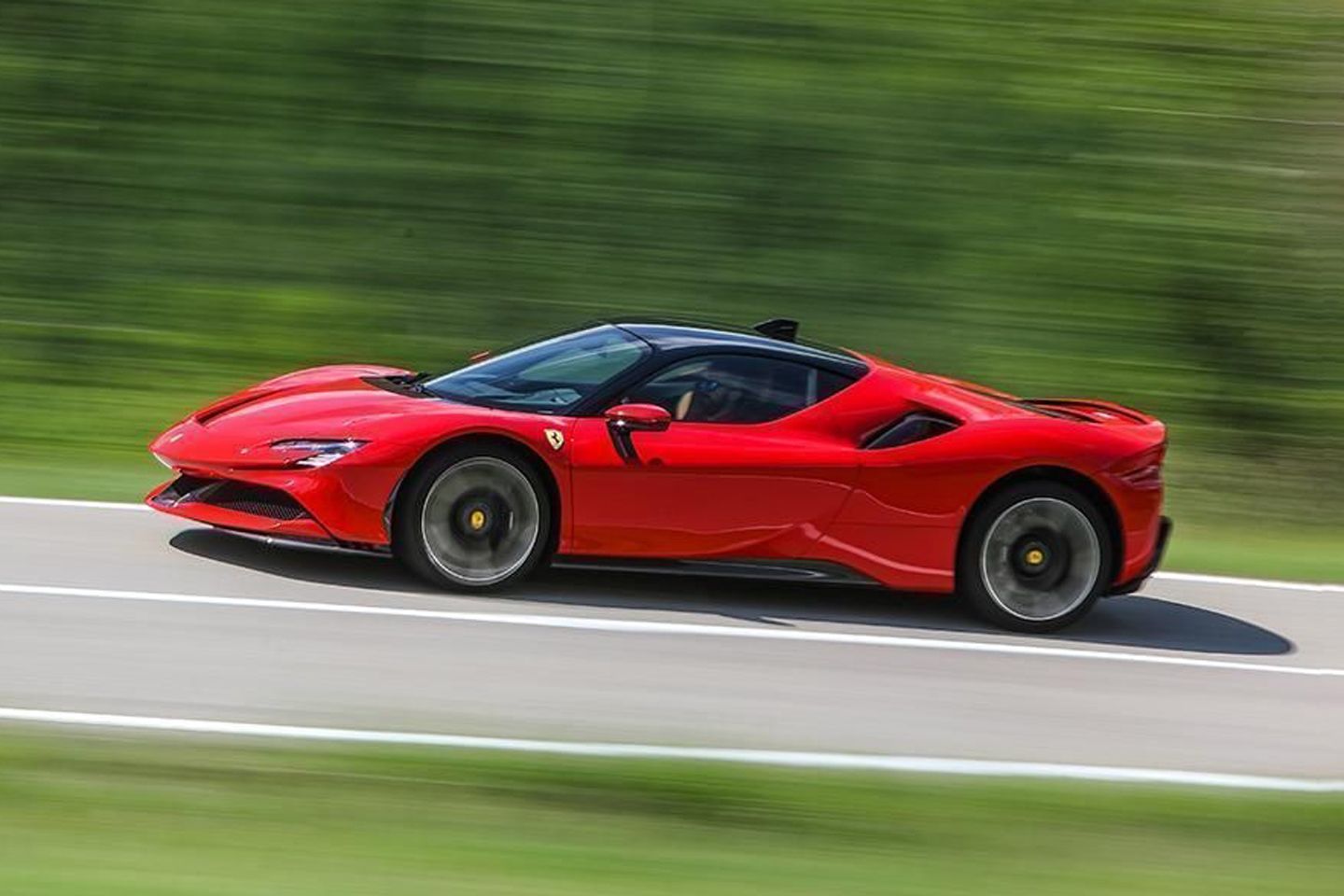
An Assetto Fiorano-spec SF90 set a new production lap record at the Indianapolis Motor Speedway in July 2021 and a Fiorano test track time of 1m 19sec, nearly a second quicker than the LaFerrari and quicker than any other Ferrari road car. More than half of all SF90 customers went for the £39,360 Assetto pack, but we’re not sure how many of them laid out another £19,200 for the carbon fibre wheels that saved another 10kg.
As per Ferrari tradition, a Spider version came out a year after the Stradale, carrying 100kg extra weight and an extra £43,000 on the price tag. It was the first Ferrari open-top hybrid and the world’s most powerful convertible on sale at the time. In a break from Ferrari tradition, the XX model that was released in mid-2023 was road-legal. (You might remember that previous XXs had been retained by the factory, delivered to the owner’s chosen circuit on request, and then taken back to the factory.) The SF90’s XX engine was powered up from 780hp to 808hp through a higher compression ratio and some judicious port-polishing. The exhaust was tweaked for a fuller sound and a more exciting one at higher revs. The new power total went up to 1,030hp, bringing the 0-62mph time down from 2.5 seconds to 2.3 seconds. The top speed was down, too, at 199mph, thanks to the extra drag of the big rear wing and plenty of other aero mods.
The XX was available in £660,000 coupe or £730,000 Spider bodystyles, both of them coming with a full-width light bar at the rear to distinguish them from common SF90s. When we say ‘available’, what we mean, of course, was that it wasn’t available unless you were a favoured customer. In October 2023, a pre-production XX set a new lap record time for homologated road cars of 1m 17.3sec around Ferrari’s Fiorano test track.
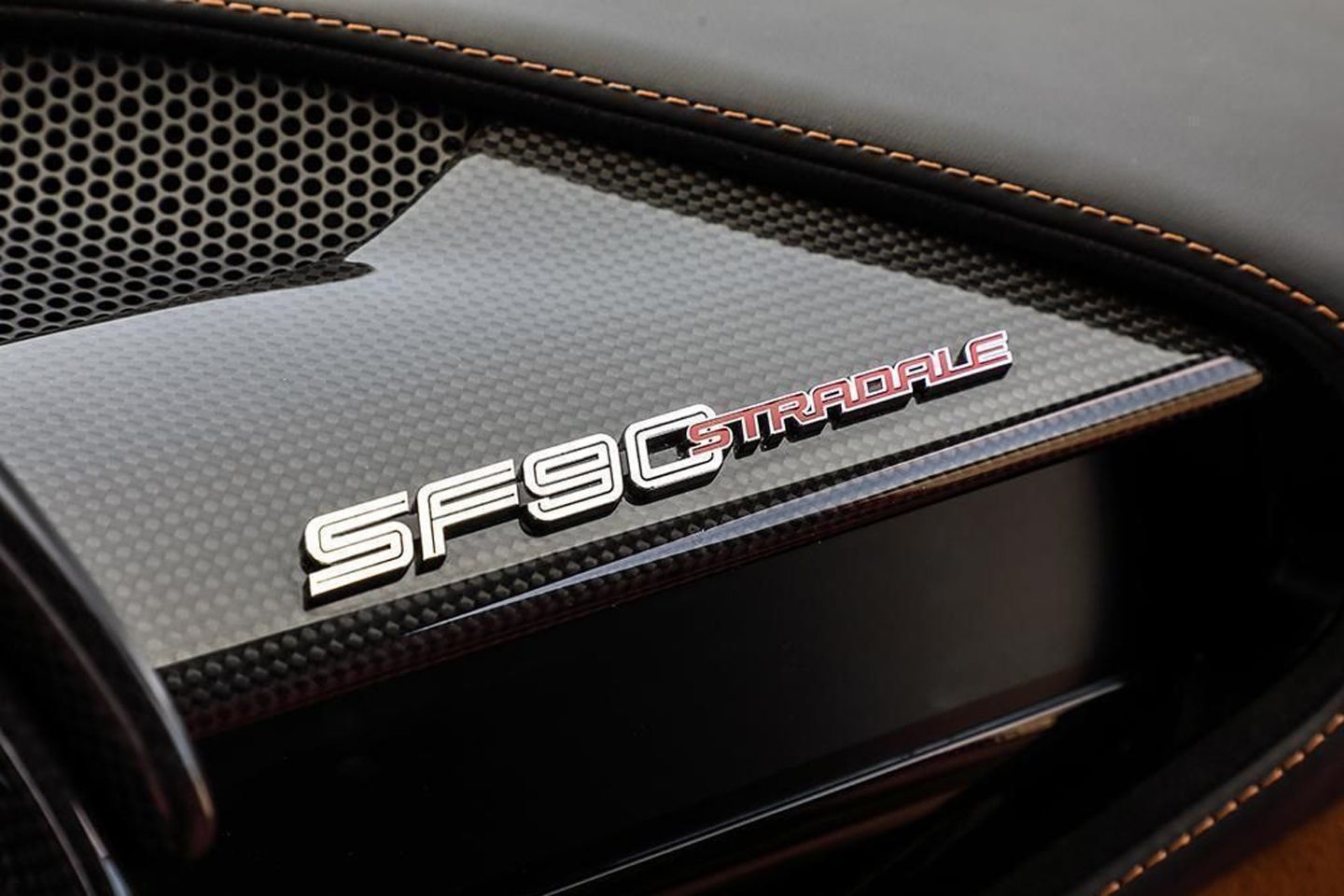
At the time of writing, there were a couple of XXs in the classifieds, but without pics or much info, so we’ll be concentrating here on the regular Stradale, which was priced from £374,420. That word ‘from’ made a big difference for buyers lashing out on extras. The invoice for the heavily-optioned UK press car was a gasp-worthy £523,460, a hike of £149,000. In August 2024, after a five-year run, the end of SF90 production was announced, with no more orders being taken after that date; it’s now been replaced by the 849 Testarossa.
The most affordable SF90 on PH Classifieds at the time of writing and the cheapest SF90 anywhere in the UK was a 7,000-miler from 2021 at £265k, though higher mileage examples have dipped to £250,000. The cheapest Spider we found was up for a little less than £350k, which is quite a difference - the majority of the 30-odd SF90s available being Stradales. It’s certainly not uncommon for prices to be reduced over time, and the arrival of a replacement model is unlikely to help residual values. Further depreciation seems likely for the SF90.
SPECIFICATION | FERRARI SF90 (2020-24)
Engine: 3,990cc, twin turbo V8, three electric motors
Transmission: 8-speed dual-clutch auto, all-wheel drive
Power (hp): 780@7,500rpm + 220 (electric), total 1000
Torque (lb ft): 590@6,000rpm
0-62mph (secs): 2.5
Top speed (mph): 211
Weight (kg): 1,570
MPG (official combined): 47.1
CO2 (g/km): 160
Wheels (in): 9.5 x 20 (f). 11.5 x 20 (r)
Tyres: 255/35
On sale: 2020-24
Price new: £375,000 (Spider £418,000)
Price now: from £250,000 (Spider £350,000)
Note for reference: car weight and power data are hard to pin down with absolute certainty. For consistency, we use the same source for all our guides. We hope the data we use is right more often than it’s wrong. Our advice is to treat it as relative rather than definitive.
ENGINE & GEARBOX
The SF90 was Ferrari’s first V8-powered range-topper for a very long time indeed. The engine was a slightly bored-out 4.0 version of the F154 flat-plane, dry-sump unit used in the 488 Pista and F8 Tributo. For the SF it had a smaller flywheel, a very high-pressure fuel injection system and new cylinder heads with substantial revisions on both the intake and exhaust sides.
Additionally, the two turbos sat outside the block rather than in the familiar ‘hot vee’ location. That reduced the overall height of the engine and lowered the car’s centre of gravity. As mentioned earlier, there were two radial flux electric motors at the front and, between the engine and gearbox, one very slender axial flux one at the back borrowed from the F1 car. The 7.9kWh battery powering these motors sat crosswise behind the seats. It endowed the SF with a potential electric-only range of 15 miles, although for Ferrari the main rationale for the front two motors was to enhance the driving experience by enabling very precise side-to-side torque vectoring.
Besides the usual manettino-controlled driving modes (Wet, Sports, Race, CT off and ESC off) there were four drivetrain modes controlled by a touch-sensitive panel on the steering wheel. eDrive ran the car through the front two electric motors only at speeds of up to 84mph or for up to 15 miles. Hybrid was the default mode, the car running on both electricity and petrol but with the V8 switching off if the right fuel-saving conditions presented themselves. In Performance mode, the engine was always running in order to deliver good responses and to keep the battery charging. Qualify gave full rein to both electric and ICE for maximum trouser-splitting performance. Reversing was carried out by the electric motors, allowing Ferrari to leave reverse gear out of the SF90’s new eight-speed Magna dual-clutch gearbox. That made it 10kg lighter than the company’s familiar seven-speed unit. The eight-speeder’s shift times were claimed to be 30 per cent faster.
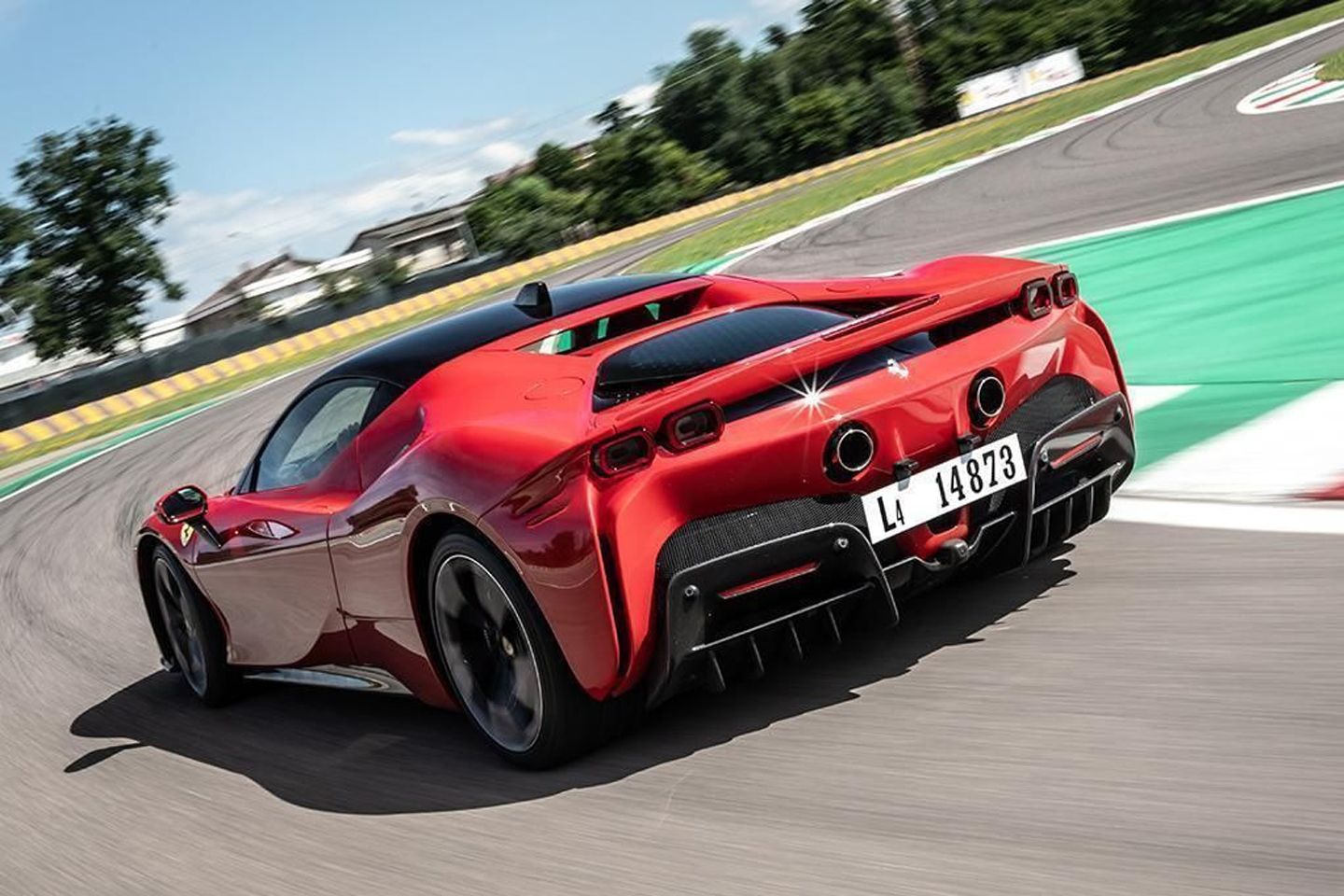
The integration of electric and ICE power was seamless and very pleasing. The delivery of truly mountainous performance was as staggering as it was effortless. Overtaking any other production car on the road was absurdly easy. The official fuel consumption claim for the SF90 was 47.1mpg. Testers have reported finding the reality on a normal (legal) UK motorway cruise to be about half that.
There was a big recall in the third quarter of 2023 affecting all SF90s (Stradales and Spiders) built over the 2022-2024 model-year range after it was discovered during a pre-production review of a new model (probably the SF90 XX) that a turbo oil delivery pipe was too thin and could rupture with predictably nasty fire-related results. No actual fires were reported.
UK Ferraris come with a four-year warranty (three years in the rest of the world), while the SF90's hybrid components are covered for five years. The former is extendable to 15 years at a cost, and there's the option to extend the hybrid warranty to include battery replacement in the 8th and 16th year. Additionally, there are seven years of free scheduled servicing and maintenance, transferable to subsequent owners up to the car’s seventh birthday. At that point, the programme can be extended one year at a time up to the car’s 15th birthday.
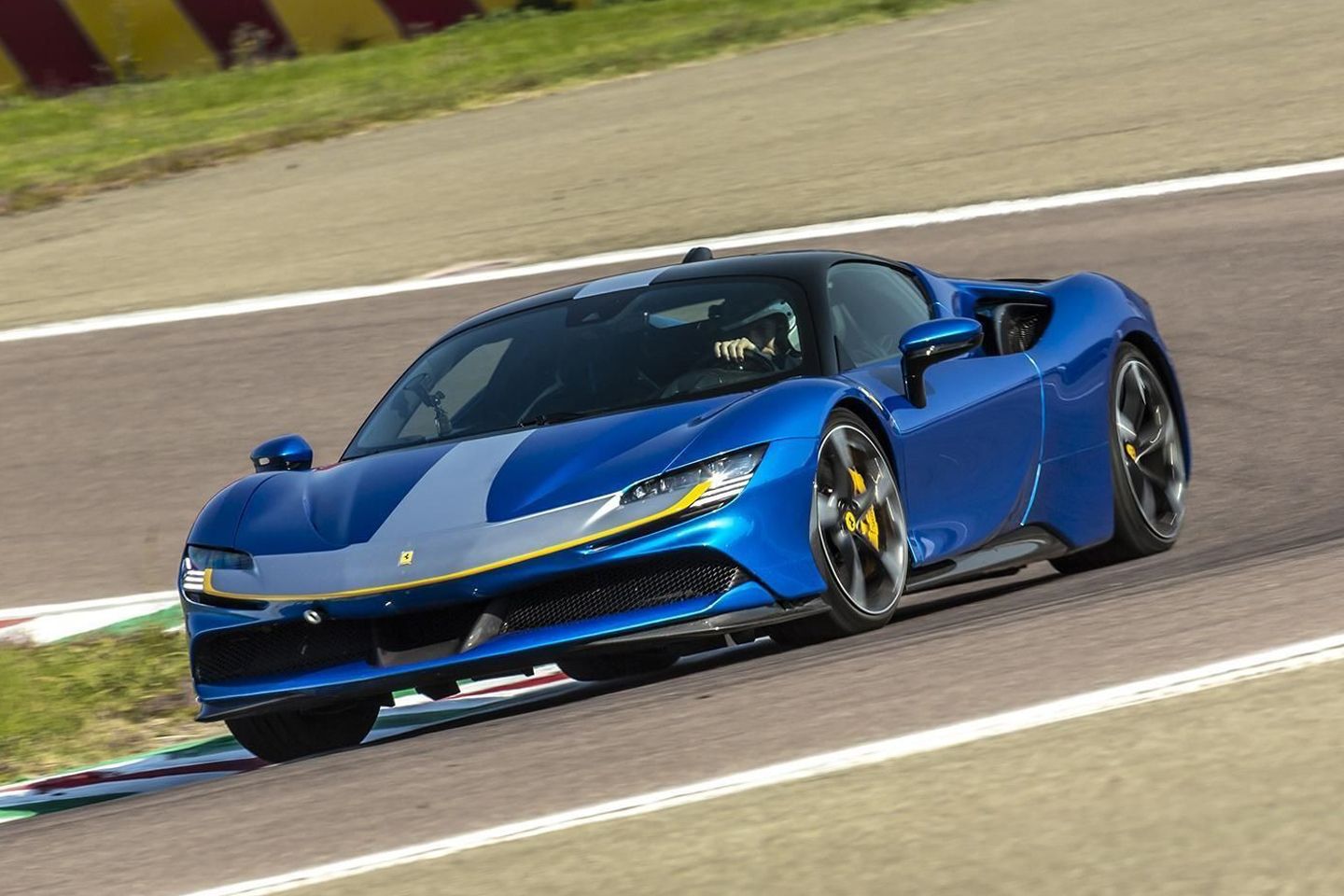
CHASSIS
Another first here: the SF90 was the first Ferrari sports car (as opposed to grand tourer) to feature all-wheel drive. Its chassis, a blend of lightweight aluminium alloys and carbon fibre for the rear bulkhead, was related to the F8 Tributo’s. Revised to handle the hybrid drivetrain, it was 20 per cent stiffer in bending loads and 40 per cent more resistant to twisting than any other comparable Ferrari monocoque.
The steering was powered by electricity and had a pleasing weight to it. The eSSC (electric Side Slip Control) system worked with eTC traction control that used the electric motors rather than the actual brakes for grip restoration as well as for energy regen. The result of all this on the road was eye-opening and apparently effortless matching of power and traction, and incredible cross-country speed. Things were slightly different around a circuit. Although the SF was monumentally quick, some testers found that it wasn’t quite as predictable in more extreme driving situations as they had been pre-conditioned to expect by other contemporary mid-engined Ferraris.
Either because of or despite the electronic torque vectoring, the responses weren’t necessarily as natural or playful as hoped, and the car inevitably seemed bigger and weightier than the usual V8 Ferrari. It was all relative, of course. Anyone stepping into an SF90 from, say, a Golf GTI, would have been blown away by the SF’s handling and by its outright ability with the Qualify drivetrain mode selected and Race dialled up on the manettino to bang out silly track times. As you might expect, the Assetto Fiorano’s combination of Multimatic dampers and titanium springs proved very effective and feelsome on a circuit, though there was a price to pay in reduced refinement on normal roads. With the standard suspension in place, the ride quality was beautifully judged and very human-friendly on motorways or autoroutes.
We’ve compared the McLaren Senna unfavourably to the SF90 elsewhere in this piece but in the rarefied area of mega-braking over extended track sessions the McLaren had a slight edge over the Ferrari’s setup of braking-by-wire with big carbon ceramic discs. For normal driving, however, once you’d grown accustomed to the variable pedal feel, the SF90’s stopping was hugely effective. As with the powertrain, the integration of regular mechanical braking and electronic retardation was deeply impressive.
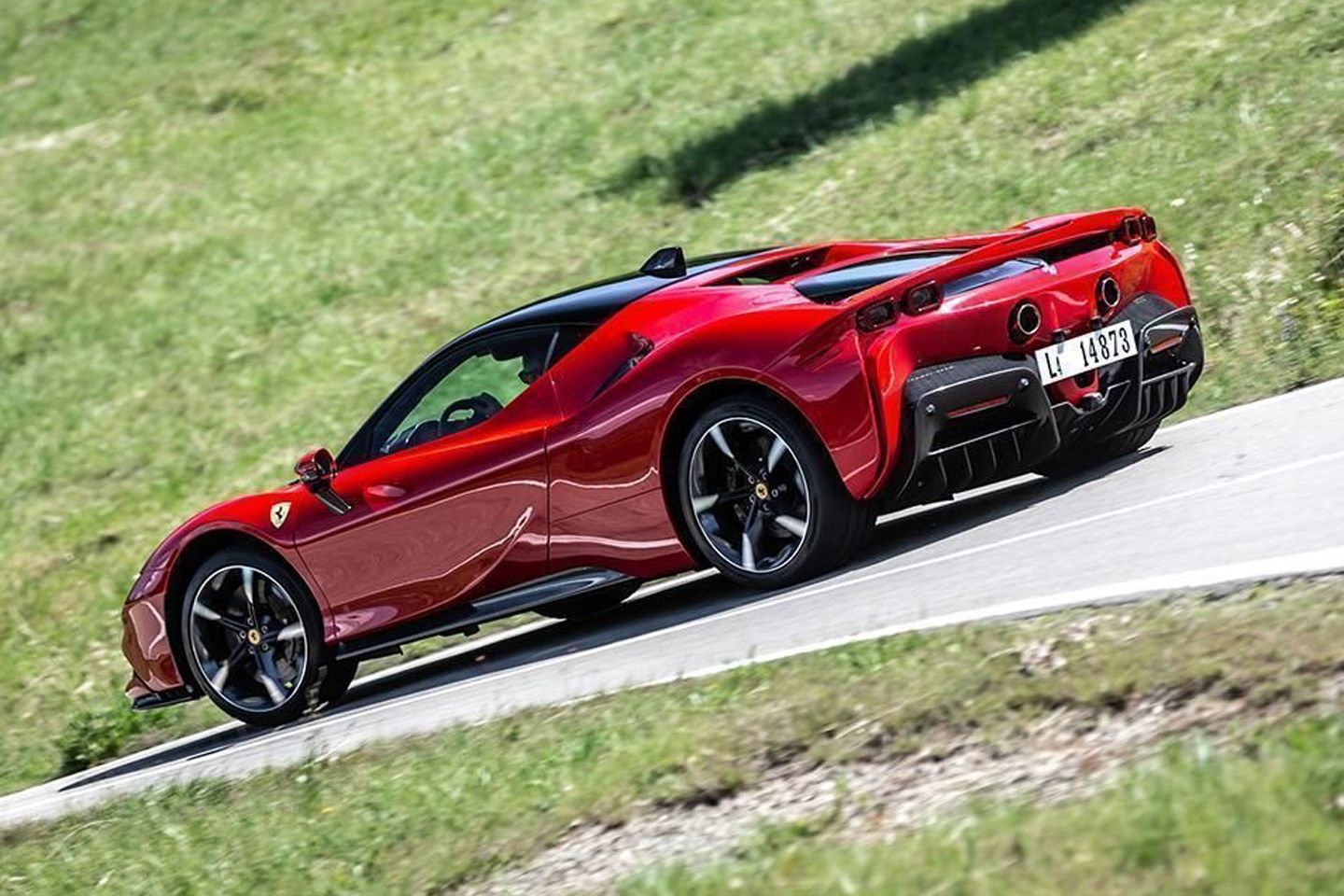
BODYWORK
In terms of the relationship between nose, cabin and wheelbase lengths, the SF90 marked a departure from Ferrari’s mid-engined norms. There was less car ahead of you than used to be the case, though the wheelbase was longer. Ferrari succeeded in delivering heavy-duty aero without most of the sticky-out appendages that are normally associated with that. It gripped the road like a race car while still managing to look like a road car.
Special paints were, as ever, reassuringly expensive. If you wanted the two-tone striped paintwork, that was a £20,000+ extra.
It was difficult to call the shallow 74-litre front-located boot anything other than small. Its already limited usability was further compromised by the need to store your battery cables in there. Some cars have needed their bonnet latches adjusting. Others have had the third (central) brake light come on and stay on after pressure washing.

INTERIOR
The SF’s interior represented a useful advance over other mid-engined Ferraris with a nice feel of ‘tourability’ coming from the softer materials and the general spaciousness. You only got one digital display, the curved 16-inch screen in front of the driver that Ferrari said was the biggest in the business. It worked well enough in combination with the touch-sensitive controls on the steering wheel, though it was a bit too easy to accidentally hit some of them. The odd book-page turning noise that went with function-swiping was a love it or hate it type of thing. Buyers were required to pay £2,400 for the inclusion of Apple CarPlay.
The standard provision of a head-up display was a positive thing but driving in sunny weather threw up some annoying reflections from the dash and from the shift gate-aping centre console brightwork. Hot weather also revealed the noisiness of the HVAC fan.
Common problems reported by owners, especially before 2023, included phone disconnections and CarPlay dropouts in both Bluetooth or cable modes, often while streaming Spotify via an iPhone. Turning the car off and on again usually reset it, for a while at least. Dealers sometimes seemed to be at a loss as to how to fix it. Firmware reinstalls were reportedly providing a solution in some cases before Ferrari sent out software updates in the second quarter of 2023 that seemed to help.
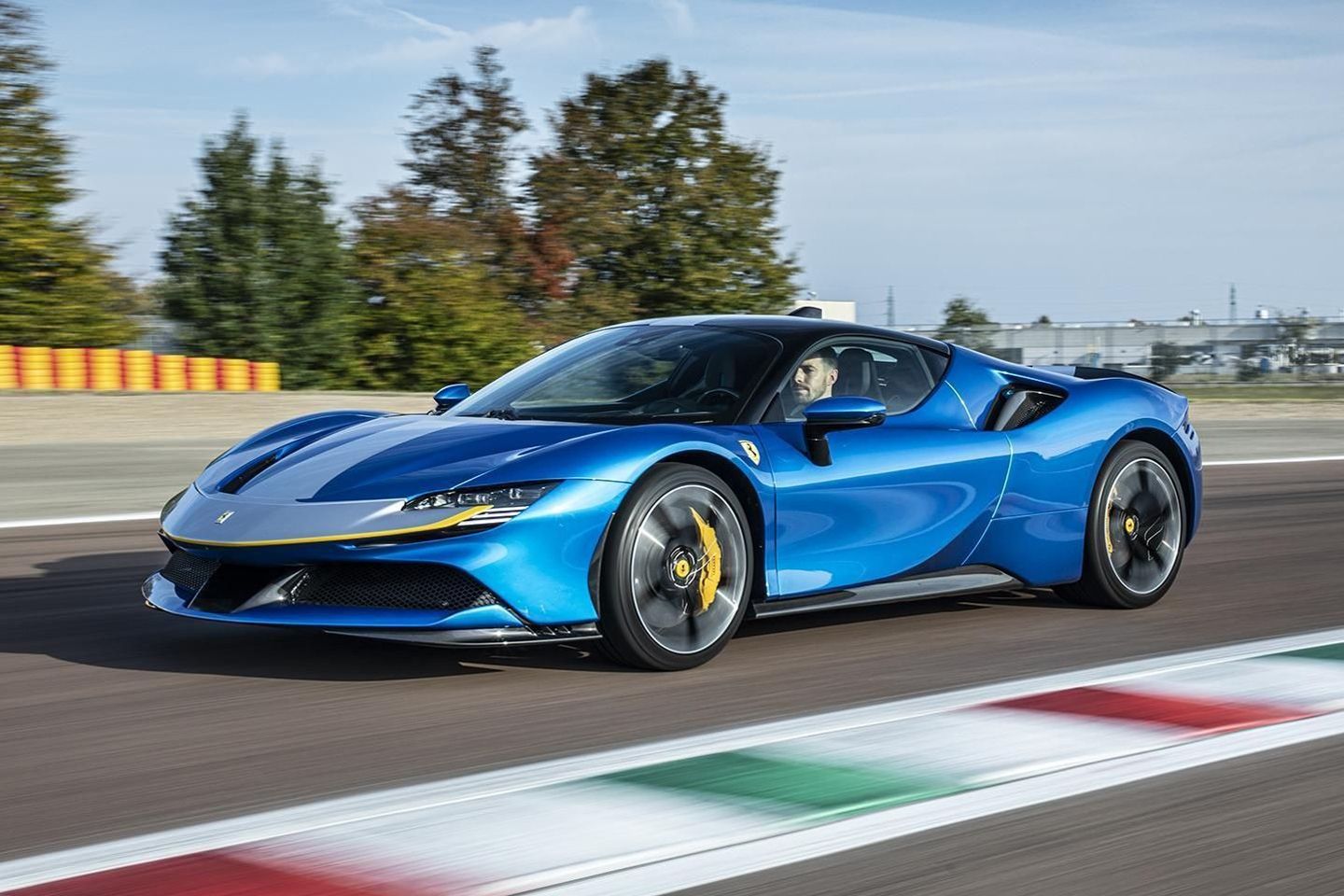
Both displays on either side of the tacho and the passenger display have been known to black out. There have also been error messages with one or more of the ADAS (Advanced Driver Assistance Systems) features. These included adaptive cruise, predictive emergency braking, blind spot monitoring, lane departure warning, auto high beam, traffic sign recognition, surround view, rear cross traffic alert and auto emergency braking. Low beam failure and traffic sign recognition seem to have been the most popular warnings. One owner reported his car throwing an ‘engine control system failure’ warning immediately upon its return from the dealership from an ADAS reset and service. That was seven weeks and 600 miles into his ownership.
Touchpad controls, reversing camera displays and audio have also glitched out, and instrumentation measurements set to Imperial have randomly reset themselves to metric. One Spider owner got a ‘WLM failure’ message after closing the roof. We haven’t been able to find out any more information on that. Another said he’d had a slew of warnings on his ’21 car including ‘hybrid system failure, go to dealer’ and ‘edrive not available’. Most were fixed by simple resets, software patches or code clearing exercises though the one that concerned him the most was ‘engine recrank not ensured’ that temporarily rendered the car immobile. The car did eventually start but it sounded different and had a wobbly idle. The solution for that was to replace the SF90’s AGM (absorbed glass mat) battery.
Some owners have been quite phlegmatic about the electrical issues, including the battery charging one mentioned earlier, tolerating them in exchange for the driving experience, but according to FerrariChat at least one owner returned their car for a refund before more negative service history could be attached to it. Carbon fibre bucket seats were a £5,760 extra. If you ticked the Assetto Fiorano box you lost the door pockets.
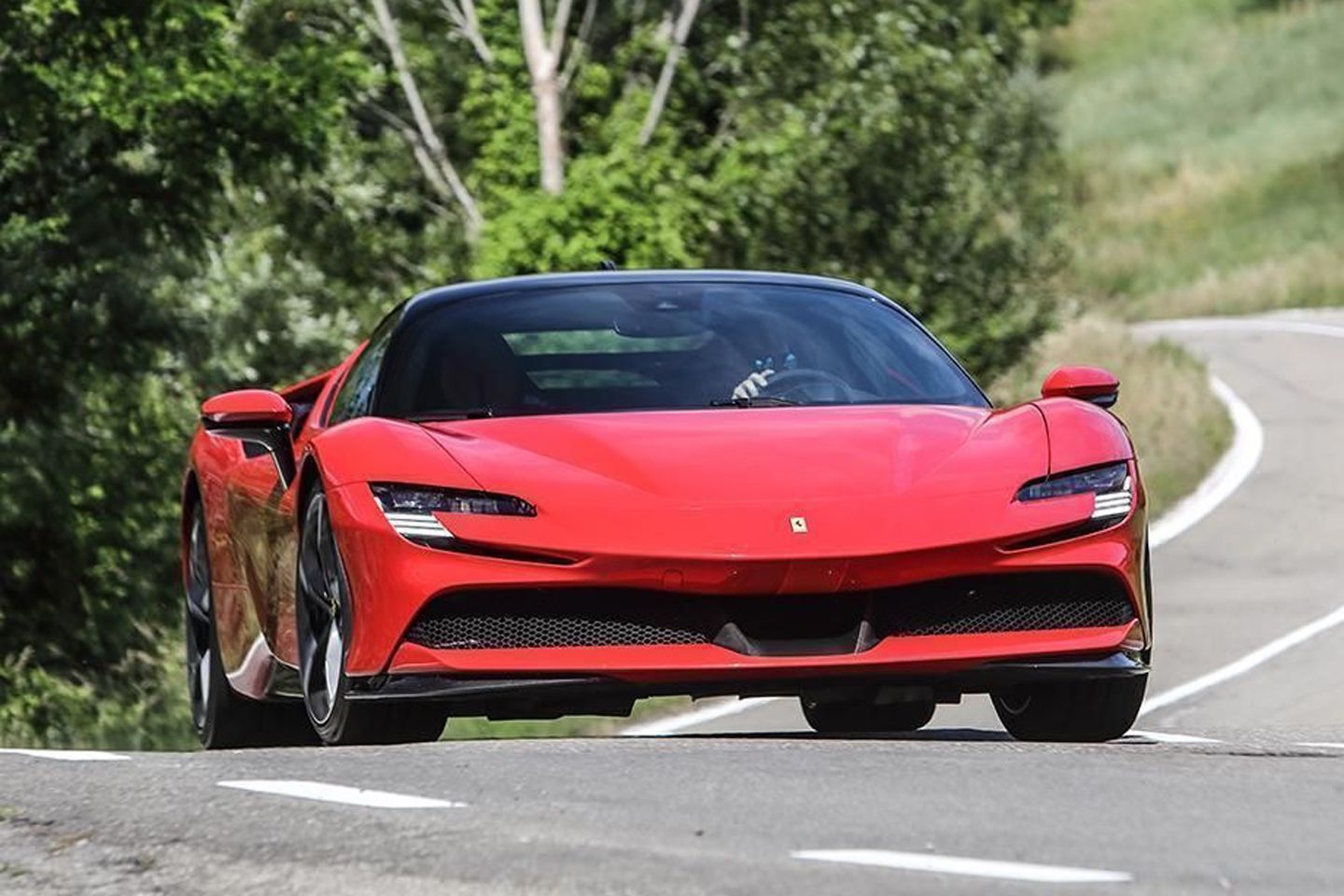
PH VERDICT
Ferrari has been operating at stratospherically high levels for a long time now but even they aren’t immune to the law of diminishing returns. Sometimes a new model will come along that, in isolation and by comparison with just about anything else on the road, is a fantastic car, but that didn’t quite light the blue touchpaper in the same way as its predecessors had. Some say that the SF falls into that category.
By any standards, but especially by Ferrari ones, SF90 values haven’t held up that well. Heavily optioned cars (which most of them are) have been particularly hard hit, a process not helped by the electrical issues – not of all which, in fairness, are exclusive to Ferrari. The big question is, how far might the prices of the most powerful Ferrari ever drop? As noted earlier, they’re already down well below £300,000 - that money buying an Assetto Fiorano car with the carbon wheels - from a start point of £374k, or in reality comfortably over £400k with options.
Here’s that £265,000 SF90 we told you about in the overview. Could they go much lower? Might we see them at £225k, or even £200k? It seems like an outlandish thought, and it probably is if we accept a) that advances in battery tech will make hybrids and full EVs more economically attractive as the years go by and b) that all or at least most of the electronic flaws get properly fixed, which is a reasonable expectation.

But is that electric element really that big an influence on the price of the SF90, or is it simply that the market hasn’t been sufficiently energised by the rest of the car? It was impossible to argue against the stats, not just with regard to the rampant horsepower but also referencing the track times that the drivetrain and the immensely capable chassis came together to provide. The trouble seemed to be that there was an air of digital detachment about it that made the car not as easy to love as some other Ferraris. The presence of twelve cylinders under the engine cover has historically made up for just about any perceived shortcomings in Ferraris of yore, but the SF only had eight. Without the glorious distraction of a V12 it was perfectly natural to look elsewhere for other areas of Ferrari specialness. In the clear light of day, there was no shortage of those, but there was also a degree of ambivalence about the styling, some likening it (in a pejorative way) to a C8 Corvette.
When you see phrases like ‘not that iconic’ and words like ‘forgettable’ being used to describe the SF90, it does makes you wonder just how high up the list of lottery win purchases a used one would be – especially when you could go just as fast in a cheaper, well-specced, new 296 for the same money, or in a used 296 which would be quite easily found for under £200k. So what is the ‘correct’ price level for a Ferrari that, despite being impossibly quick, powerful and accomplished, has somehow left some people cold? That’s kind of a new thing, isn’t it? Who knows.
Buyers have always been happy to pay a good bit more for any Ferrari Spider, and they certainly had to pay hard for the SF90 one which began life in 2021 at an asking price just short of £420k. Used Spider prices as of September 2025 suggest they haven’t depreciated as steeply, in either percentage or pound terms, as the Stradale. The cheapest Spider on PH Classifieds was this ’22 example in red with 6,000 miles for £343k. We haven’t seen any for less than that. Are they actually being bought for this sort of money though, or have they got further to fall to align them more closely with the Stradale? The market will decide.
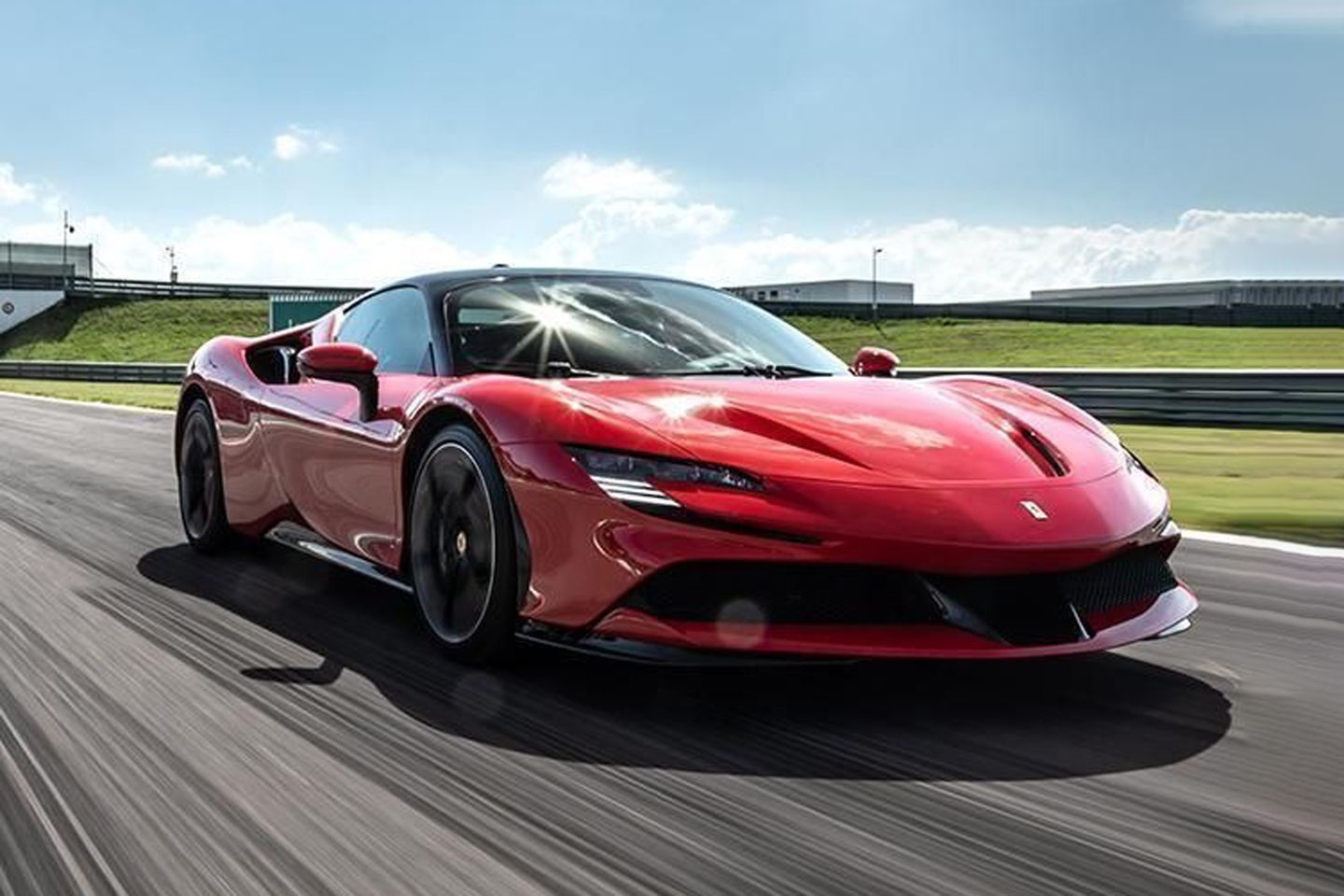
for example, make it 20% allround more compact, incl the power.
if it has in this case say 1.000hp it still would have 800hp which is still more then enough, specially in a compacter car that than weighs also way less.
This measurement is consistent across all versions of the vehicle.
The car's dimensions include a width of 1972 mm and a height of 1186 mm.
458 was the last stop-in-your-tracks pretty Ferrari for me - did exactly that first time I saw one on a high-street. Don’t want more than 220-250 manual and NA BHP/ton in a car to properly enjoy on modern roads.
for example, make it 20% allround more compact, incl the power.
if it has in this case say 1.000hp it still would have 800hp which is still more then enough, specially in a compacter car that than weighs also way less.
This measurement is consistent across all versions of the vehicle.
The car's dimensions include a width of 1972 mm and a height of 1186 mm.
The problem manufacturers failed to foresee, was that adding electric motors was going to contribute to a loss of soul. And that is a big issue with Italian cars known for their sonorous engines.
Then there is the added weight.
It reminds me of the NSX hybrid.
No thanks.
https://www.autotrader.co.uk/car-details/202502088...
Gassing Station | General Gassing | Top of Page | What's New | My Stuff







